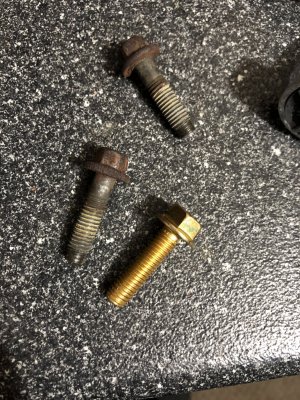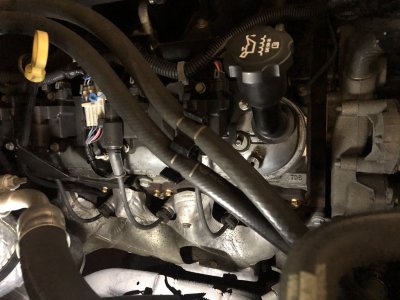I place a large punch (5/16") in the center of the bolt head and give it few decent whacks with a hammer. A bolt held with vise-grips works the same if you don't have a punch. You don't hit it hard enough to risk cracking the aluminum head, just enough to shock the bolt in it's threads. Then I use a small 3/8" impact since it's weak to hammer the bolt in the tightening direction a few hits first, then a few hits in reverse, a few hits tightening, then reverse. Repeat a few times then continue to hammer it in reverse for a little while in attempt to remove it. If it doesn't wanna back out, repeat the process. Sometimes, the 3/8" impact isn't strong enough, so I'll use a box end wrench and hit it with a hammer. Shocking it to turn the bolt rather than slowly torquing it is much more effective in preventing it from twisting apart.
Once you get the bolts out and manifold out the way, you can put a nut over that broken one and weld it in place, then try the removal technique again. I'd tap the broken piece with a hammer a few times before welding the nut over it. Just don't hit it hard enough to flatten it into the head.


